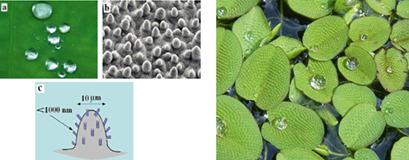当前位置:
X-MOL 学术
›
ChemBioEng Rev.
›
论文详情
Our official English website, www.x-mol.net, welcomes your
feedback! (Note: you will need to create a separate account there.)
Contribution of Superhydrophobic Surfaces and Polymer Additives to Drag Reduction
ChemBioEng Reviews ( IF 6.2 ) Pub Date : 2021-06-01 , DOI: 10.1002/cben.202000036 Taiba Kouser 1 , Yongliang Xiong 1, 2 , Dan Yang 3, 4
ChemBioEng Reviews ( IF 6.2 ) Pub Date : 2021-06-01 , DOI: 10.1002/cben.202000036 Taiba Kouser 1 , Yongliang Xiong 1, 2 , Dan Yang 3, 4
Affiliation

|
Drag reduction has constantly received great attention due to its extensive range of applications in fluid transportation and vehicle industries. The vital role of two different additive and non-additive techniques (polymer additives and superhydrophobic surfaces) to reduce the drag force experienced by underwater vehicles, fluid flow through pipes, ducts, open or closed channels, and other wall-bounded laminar and turbulent flows is highlighted. Reducing the drag resistance can significantly enhance the performance of immersed vehicles and results in saving the energy consumed on a large scale. The progress in theoretical modeling, experimental and computational studies of both techniques are reviewed, together with the surface design, wettability, and influence of the roughness factor of superhydrophobic surfaces and the effect of polymer drag-reducing agents for wall-bounded flows and multiphase flows. General formulations, potential applications, and major issues involved in the aforementioned approaches are summarized.
中文翻译:

超疏水表面和聚合物添加剂对减阻的贡献
减阻因其在流体运输和车辆行业的广泛应用而不断受到人们的关注。两种不同的添加剂和非添加剂技术(聚合物添加剂和超疏水表面)在减少水下航行器、通过管道、导管、开放或封闭通道的流体流动以及其他壁面层流和湍流所经历的阻力方面的重要作用突出显示。降低阻力可以显着提高浸入式车辆的性能,并大规模节省能源消耗。回顾了这两种技术在理论建模、实验和计算研究方面的进展,以及表面设计、润湿性、以及超疏水表面粗糙度因子的影响以及聚合物减阻剂对壁界流动和多相流动的影响。总结了上述方法中涉及的一般配方、潜在应用和主要问题。
更新日期:2021-08-05
中文翻译:

超疏水表面和聚合物添加剂对减阻的贡献
减阻因其在流体运输和车辆行业的广泛应用而不断受到人们的关注。两种不同的添加剂和非添加剂技术(聚合物添加剂和超疏水表面)在减少水下航行器、通过管道、导管、开放或封闭通道的流体流动以及其他壁面层流和湍流所经历的阻力方面的重要作用突出显示。降低阻力可以显着提高浸入式车辆的性能,并大规模节省能源消耗。回顾了这两种技术在理论建模、实验和计算研究方面的进展,以及表面设计、润湿性、以及超疏水表面粗糙度因子的影响以及聚合物减阻剂对壁界流动和多相流动的影响。总结了上述方法中涉及的一般配方、潜在应用和主要问题。











































 京公网安备 11010802027423号
京公网安备 11010802027423号